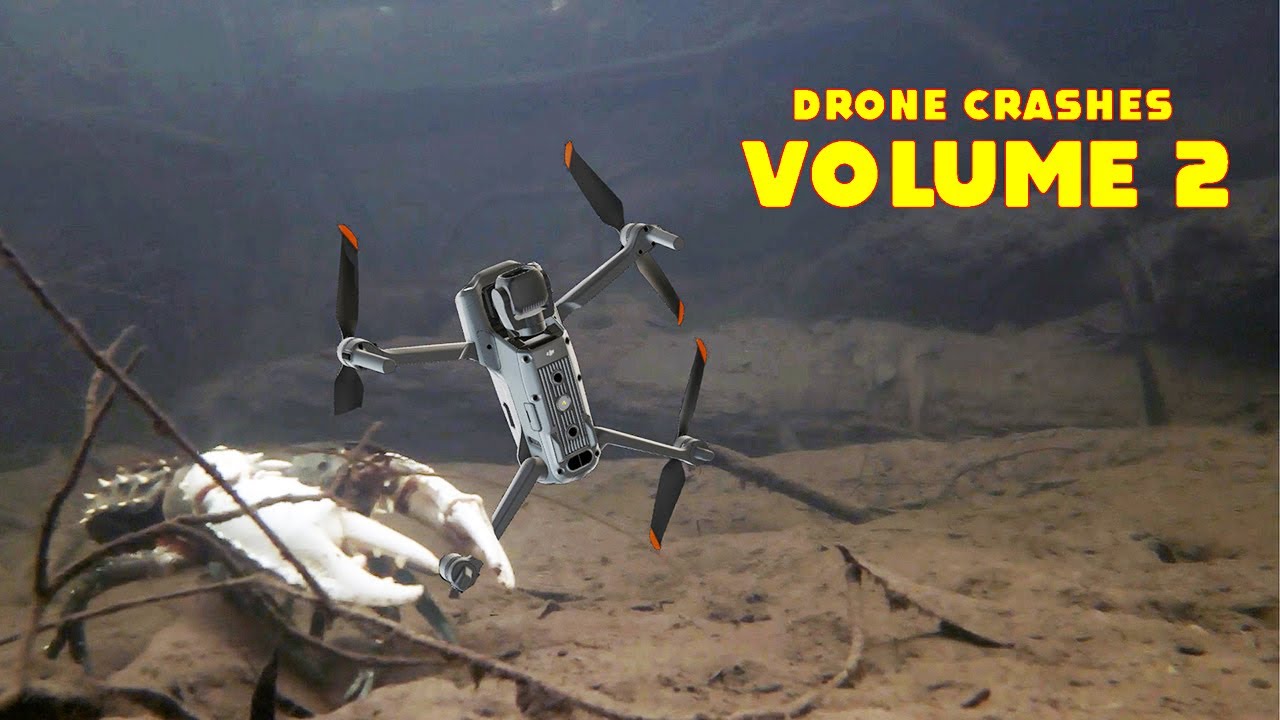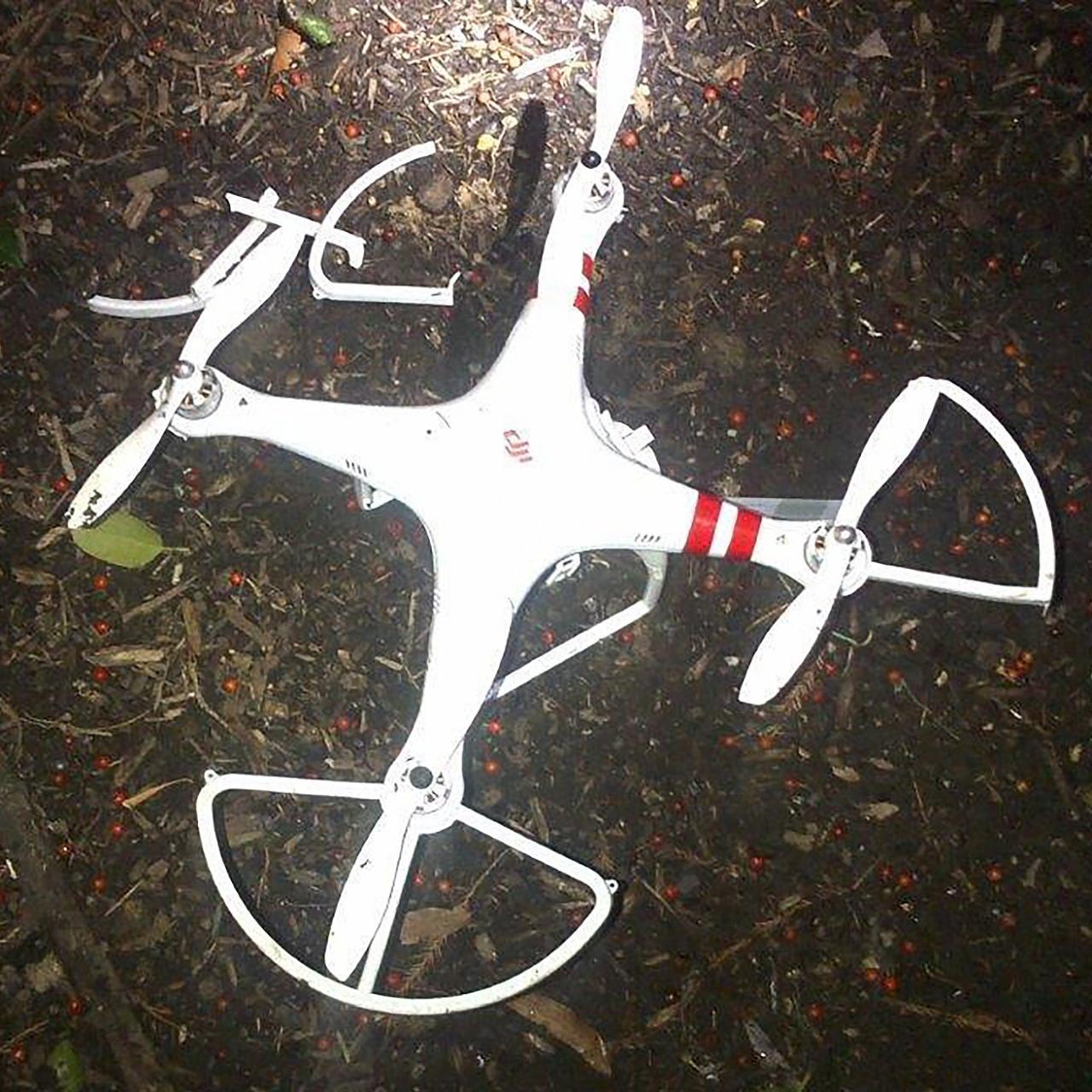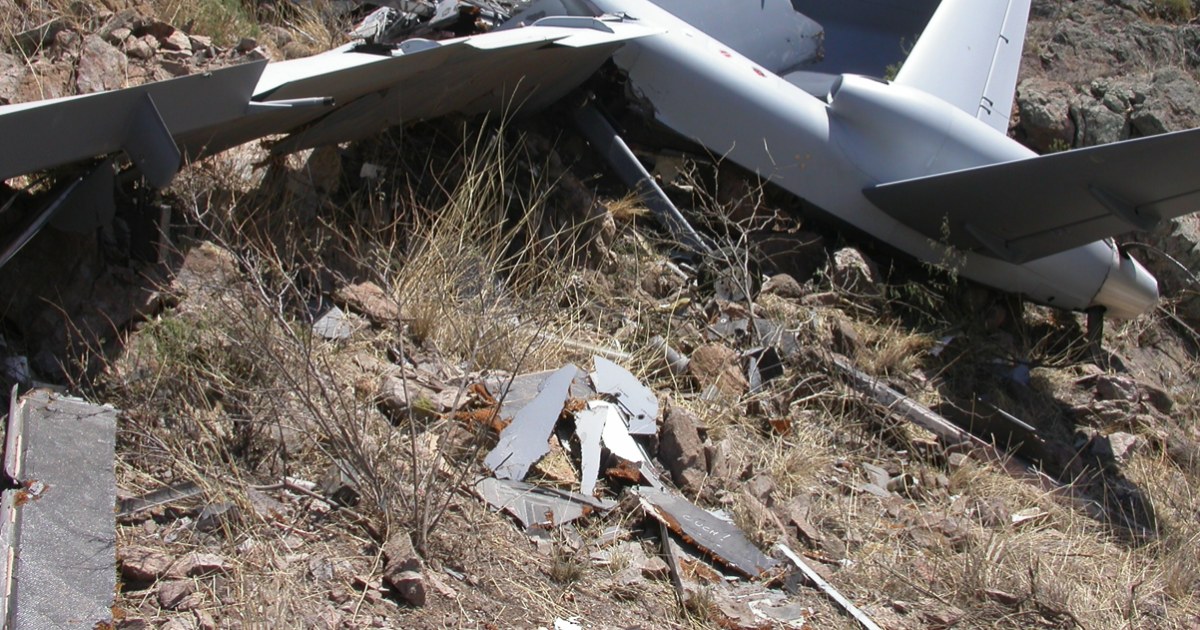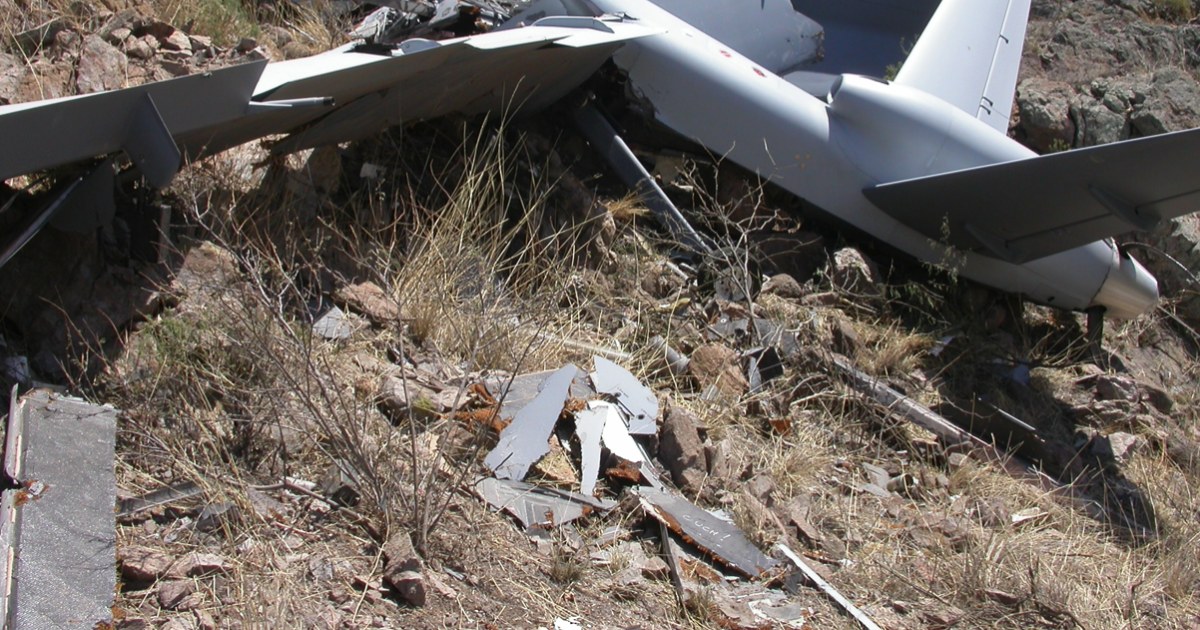Drone crash in Paris: A seemingly quiet Parisian day was shattered when a drone malfunctioned, leading to a chaotic scene and raising crucial questions about drone safety and regulation. This incident sparked a flurry of activity, from emergency responders rushing to the site to official investigations trying to piece together the events. We’ll explore the immediate aftermath, the official response, potential causes, and the lasting impact this crash had on the city and drone regulations.
This detailed account examines eyewitness testimonies, official reports, and expert analysis to unravel the mystery surrounding the drone crash. We’ll delve into the technological aspects of the drone itself, analyze potential causes ranging from mechanical failure to deliberate action, and assess the broader implications for urban airspace management and public safety.
Immediate Aftermath of the Drone Crash

The immediate aftermath of a drone crash in a bustling city like Paris would be chaotic and complex, involving a rapid response from emergency services and a flurry of eyewitness accounts. The initial focus would be on assessing the damage, ensuring public safety, and identifying the cause of the incident. The scale of the response would depend heavily on the location of the crash and the extent of any damage or injuries.The scene itself would likely be a mixture of confusion and concern.
Depending on the size and weight of the drone, the impact could range from a relatively minor incident to a more serious event requiring significant cleanup and investigation. Eyewitnesses would offer a variety of perspectives, from brief glimpses of the drone falling to detailed descriptions of the crash itself. Initial reports from the authorities would likely be cautious and limited, focusing on confirming the event and ensuring public safety while investigations were underway.
Details of the Drone Crash
The following table summarizes potential events in the immediate aftermath of a hypothetical drone crash in Paris. Note that this is a hypothetical example and specific details would vary based on the actual circumstances of the event.
| Time | Location | Event | Source |
|---|---|---|---|
| 14:37 | Near the Eiffel Tower | Drone crashes into a small park. Witnesses report a loud whirring sound followed by a thud. | Eyewitness accounts on social media |
| 14:40 | Same location | Police and emergency services arrive on the scene. The area is cordoned off. | Police report |
| 14:45 | Same location | Initial assessment reveals the drone is a DJI Mavic 3, approximately 900 grams, with significant damage to its propellers and camera. No injuries reported. | Police report, preliminary drone inspection |
| 14:50 | Nearby police station | The drone is taken into custody for investigation. Initial reports suggest a possible malfunction, but further investigation is needed. | Police statement |
Investigation and Official Response
The drone crash in Paris sparked a swift and thorough investigation, involving multiple agencies and international cooperation. The process involved securing the crash site, collecting evidence, analyzing data from the drone itself (if recoverable), and interviewing witnesses. The timeline of events and official responses provides insight into the complexities of such an incident.
Timeline of the Official Investigation
The investigation began immediately following the crash, likely within hours of the incident. A preliminary report, focusing on immediate facts and safety concerns, might have been released within a week. This initial report would likely contain limited information, prioritizing public safety and avoiding speculation. A more comprehensive report, including detailed analysis of the drone’s flight path, technical malfunction analysis (if any), and pilot identification and culpability, would take significantly longer, potentially several months or even years depending on the complexity of the case and any legal proceedings.
Subsequent updates would likely be released periodically as significant findings emerge. For example, a mid-point update might reveal the preliminary cause of the crash, while a final report would contain all findings and recommendations to prevent future occurrences. Specific dates would depend on the actual incident and would need to be replaced with realistic examples in a real-world scenario.
Official Statements Released by Relevant Authorities
Initial statements from the police would likely focus on securing the area, confirming the incident, and assuring the public of their commitment to a full investigation. Aviation authorities would likely release statements outlining the immediate impact on air traffic, any temporary flight restrictions implemented, and their role in the investigation. Further statements would be issued as the investigation progressed, providing updates on findings and next steps.
It’s important to note that official statements often balance the need for transparency with the need to avoid compromising the integrity of the investigation. They often use carefully chosen language to avoid premature conclusions or accusations.
Key Players Involved in the Investigation
| Agency/Organization | Role |
|---|---|
| Parisian Police Department | Securing the crash site, initial witness interviews, evidence collection. |
| French Aviation Safety Investigation Authority (BEA – Bureau d’Enquêtes et d’Analyses pour la sécurité de l’aviation civile) | Technical investigation of the drone, flight data analysis, determining cause of the crash. |
| Drone Manufacturer (if applicable) | Providing technical specifications, assisting with analysis of potential mechanical failures. |
| Drone Operator (if identified) | Providing information about flight plan, experience level, and any relevant circumstances. |
| National Gendarmerie (if applicable) | Assisting with security and evidence gathering, potentially involved if criminal activity is suspected. |
Potential Causes and Theories
The drone crash in Paris, while seemingly a singular event, presents a complex puzzle with several potential contributing factors. Investigating the incident requires considering a range of possibilities, from simple mechanical malfunctions to deliberate acts of sabotage. The lack of readily available, comprehensive information in the immediate aftermath highlights the need for a thorough examination of various theories.The investigation will likely focus on three primary areas: mechanical failure within the drone itself, pilot error or malfunctioning control systems, and malicious intent.
Each of these avenues presents unique challenges in terms of evidence gathering and analysis. The interplay between these factors could also be significant, meaning the final determination might involve a combination of contributing causes.
Hey, so you heard about that drone crash in Paris? It got me thinking about the bigger picture – all the drone crashes in Paris, actually. Check out this site for more info on the issue: drone crashes in paris. Understanding the frequency of these incidents helps us figure out ways to prevent future drone crashes in Paris and improve overall safety.
Mechanical Failure
Mechanical failure encompasses a wide spectrum of potential problems, from simple component fatigue to more catastrophic events. These failures could manifest in various ways, impacting the drone’s stability, flight control, or propulsion systems. A thorough examination of the drone’s wreckage is crucial for determining if a mechanical issue played a role.
- Evidence of motor failure: Burn marks on the motors, evidence of overheating, or physical damage to the motor components would indicate potential motor malfunction.
- Structural damage: Cracks, bends, or other signs of stress on the drone’s frame could point to a structural failure during flight, perhaps due to a pre-existing weakness or impact.
- Propeller damage: Bent, broken, or otherwise damaged propellers could indicate a mid-flight collision or a manufacturing defect leading to instability.
- Battery malfunction: Signs of overheating, swelling, or internal damage to the drone’s battery could indicate a power failure leading to loss of control.
Pilot Error
Human error, even with experienced drone pilots, remains a significant factor in drone accidents. This could involve issues with navigation, improper pre-flight checks, or a misjudgment of environmental conditions. The pilot’s training, experience, and adherence to safety protocols will all be key aspects of the investigation.
- Pilot’s flight log data: This data will provide insights into the drone’s flight path, altitude, speed, and any unusual maneuvers before the crash.
- Witness testimonies: Statements from witnesses on the ground could corroborate or contradict the flight data, providing additional context to the events leading up to the crash.
- Pilot’s qualifications and experience: Assessing the pilot’s level of training and expertise is crucial to determine if their actions contributed to the incident.
- Compliance with regulations: A review of whether the pilot adhered to airspace restrictions and other relevant regulations will be a key part of the investigation.
Malicious Intent
While less likely, the possibility of malicious intent, such as deliberate sabotage or hacking, cannot be ruled out. This would involve external interference with the drone’s systems, either physically or electronically. Evidence of tampering or external interference would be critical in supporting this theory.
- Evidence of tampering: Physical signs of tampering with the drone’s components, such as wires cut or components replaced, could indicate malicious intent.
- Cybersecurity analysis: Examination of the drone’s flight controller and other electronic systems for signs of hacking or unauthorized access is crucial.
- Surveillance footage: Reviewing security camera footage from the area could provide visual evidence of any suspicious activity leading up to the crash.
- Radio frequency interference: Analysis of radio frequency data could reveal any external interference with the drone’s control signals.
Impact on Parisian Infrastructure and Public
The drone crash, while seemingly a small incident, had a ripple effect across Parisian infrastructure and public life, disrupting daily routines and sparking significant public discussion. The immediate area surrounding the crash site experienced the most pronounced effects, but the broader impact extended beyond the immediate vicinity.The impact on Parisian infrastructure was thankfully minimal. The drone, while causing a localized disruption, did not inflict extensive damage to buildings or critical infrastructure.
A drone crash in Paris is always a big deal, especially given the city’s density. But what makes some crashes even more puzzling is the potential link to unidentified drones. Check out this article on a mystery drone Paris incident to see how these unsolved cases impact investigations into other drone incidents. Understanding these unexplained events helps us learn more about preventing future drone crashes in Paris.
Reports indicated minor damage to a small section of a park’s fencing and some scattered debris across a relatively small area. There was no significant disruption to power grids or communication networks. However, the temporary closure of the affected park area and the surrounding streets for investigation and cleanup efforts led to indirect consequences for the public.
Disruption to Public Life and Transportation
The temporary closure of the park and nearby streets caused some traffic congestion and minor delays for public transportation. Buses were rerouted for a few hours, and some pedestrian routes were temporarily inaccessible. While not a major disruption to the city’s overall transportation network, the incident did cause localized inconvenience for commuters and residents. The affected area is a popular tourist spot, and the temporary closure led to some disruption for tourists, causing delays in their planned itineraries.
The closure also impacted local businesses, especially those located near the crash site, who experienced a temporary dip in foot traffic.
Public Reaction and Social Media Commentary
The public reaction to the drone crash was a mixture of concern, curiosity, and some amusement. Many Parisians expressed relief that the incident didn’t result in any serious injuries or significant damage. Social media platforms buzzed with activity immediately following the event, with many users sharing videos and photos of the crash site, speculating about the cause of the crash, and expressing their opinions on drone regulations.
Some social media commentary highlighted the need for stricter drone regulations to prevent similar incidents in the future. Others focused on the swift response of emergency services and the minimal disruption caused by the incident. The overall sentiment, while initially concerned, quickly shifted to a sense of relief and a discussion about safety regulations and responsible drone use.
Drone Regulations and Safety Measures
The recent drone crash in Paris highlights the crucial need for robust and adaptable drone regulations. Current legislation, while aiming for safety and responsible drone operation, evidently needs review following this incident. Understanding the existing framework and its limitations is essential for proposing effective improvements.Existing drone regulations in France and specifically Paris are multifaceted, covering aspects like registration, pilot licensing, operational limitations, and airspace restrictions.
These regulations, largely based on European Union Aviation Safety Agency (EASA) guidelines, aim to balance the increasing popularity of drones with public safety and security concerns. However, the specifics can be complex and vary depending on the drone’s weight, intended use, and the location of operation. For example, heavier drones often require more stringent licensing and operational restrictions.
No-fly zones exist around sensitive locations such as airports, government buildings, and crowded areas. Enforcement, however, presents ongoing challenges.
Existing French and Parisian Drone Regulations
French drone regulations, harmonized with EU standards, require drone operators to register their drones above a certain weight and obtain a specific competency certificate depending on the drone’s weight and intended use. Operators are responsible for maintaining a safe distance from other aircraft and people. Specific regulations within Paris may impose further restrictions due to the high density of buildings, population, and significant landmarks.
These regulations, detailed on the DGAC (Direction Générale de l’Aviation Civile) website, are regularly updated to reflect technological advancements and safety concerns. Penalties for violating these regulations range from fines to imprisonment.
Implications of the Paris Drone Crash on Current Safety Protocols, Drone crash in paris
The incident underscores the limitations of existing safety protocols. While regulations exist, the crash indicates gaps in enforcement, potential vulnerabilities in current technology, or a lack of awareness among some drone operators. The event necessitates a critical review of current procedures, including the effectiveness of registration systems, the adequacy of pilot training, and the clarity of airspace restrictions. The incident also highlights the potential for unforeseen circumstances and the need for contingency plans.
For example, the crash may prompt a reassessment of emergency response procedures for drone incidents in densely populated urban areas.
That drone crash in Paris got me thinking about drone safety protocols. It’s a reminder that even with advanced technology, things can go wrong, like what happened at the orlando drone show accident. Learning from incidents like these, whether a single drone malfunction or a larger show mishap, is key to improving drone operation and preventing future crashes in places like Paris.
Potential Improvements to Drone Regulations and Safety Measures
The Paris drone crash provides valuable insights for improving drone safety. Implementing these improvements could significantly mitigate future risks.
- Enhanced Drone Identification and Tracking Systems: Mandating the integration of reliable tracking and identification systems in all drones, enabling real-time monitoring and immediate location identification in case of malfunction or unauthorized operation.
- Strengthened Enforcement Mechanisms: Increasing resources dedicated to drone regulation enforcement, including advanced surveillance technologies and stricter penalties for violations. This includes more proactive monitoring and faster response times to reported incidents.
- Improved Pilot Training and Certification: Introducing more rigorous training programs and stricter certification requirements for drone pilots, focusing on risk assessment, emergency procedures, and understanding of airspace regulations. This could include simulator training and regular competency checks.
- Advanced Geofencing Technology: Implementing sophisticated geofencing systems that adapt dynamically to changing conditions and events, preventing drones from entering restricted airspace, particularly around critical infrastructure and events. This could incorporate real-time data feeds on air traffic and weather conditions.
- Public Awareness Campaigns: Launching comprehensive public awareness campaigns to educate drone operators and the general public about safe drone operation, regulations, and the potential consequences of irresponsible use. This could include multilingual materials and easily accessible online resources.
Illustrative Description of the Crash Site

The drone crash site, nestled within the bustling heart of Paris, presented a scene of jarring contrast. The elegant architecture and vibrant Parisian life that typically characterize the area were momentarily overshadowed by the stark reality of the incident. The immediate vicinity, typically alive with the sounds of café chatter and car horns, was strangely silent, punctuated only by the hushed whispers of onlookers and the whirring of emergency vehicles arriving on the scene.The air hung heavy with the metallic tang of burnt electronics, a sharp scent that cut through the usual aroma of freshly baked bread and exhaust fumes.
Visually, the scene was dominated by the wreckage itself: twisted metal and shattered plastic strewn across a small section of cobblestone pavement. The drone, once a sleek piece of technology, was reduced to a mangled heap, its once-powerful propellers now useless and bent at odd angles. Nearby, fragments of its casing lay scattered, like debris from a miniature explosion.
The surrounding buildings, mostly grand Haussmannian apartments, seemed to watch silently, their elegant facades a stark backdrop to the chaotic scene unfolding below. Even the usually vibrant flower boxes lining the nearby windows seemed to droop in sympathy, their colorful blossoms momentarily dimmed by the somber mood.
The Immediate Surroundings
The crash occurred on a relatively quiet side street, just off a more heavily trafficked boulevard. The street itself was lined with mature chestnut trees, their leaves rustling in the gentle breeze, a stark contrast to the stillness of the immediate crash area. Several small, independent boutiques and cafés bordered the street, their windows displaying an array of Parisian goods – from stylish clothing to artisanal pastries.
The proximity of these establishments, however, seemed to have little effect on the gravity of the situation; the quiet respect of those present spoke volumes about the seriousness of the event. The overall impression was one of surreal juxtaposition: the unexpected intrusion of chaos into an otherwise charming and orderly environment.
Long-Term Consequences and Policy Implications
A drone crash in a major city like Paris, regardless of the specific circumstances, carries significant long-term consequences that ripple through public perception, policy, and the drone industry itself. The immediate aftermath is crucial, but the lasting effects will shape how drones are viewed and regulated for years to come. This section explores the potential ramifications of such an event.
The incident’s impact extends far beyond the immediate damage and investigation. It serves as a stark reminder of the potential risks associated with increasingly prevalent drone technology and necessitates a thorough examination of existing safety protocols and regulatory frameworks.
Changes in Public Perception of Drones
The public’s perception of drones is likely to shift following a high-profile crash in a densely populated area. Negative media coverage and public anxieties could lead to a decrease in public trust and acceptance of drone technology. This could manifest in increased fear of drones, impacting the acceptance of drone delivery services or other commercial drone applications. For example, after a series of near misses with passenger aircraft, public concern regarding drone safety increased significantly, leading to stricter regulations in several countries.
Impact on the Drone Industry in France and Beyond
A major drone crash in Paris could have a significant impact on the drone industry, both in France and internationally. The consequences might range from increased insurance premiums for drone operators to stricter regulations and slower adoption rates. The incident could also trigger a reassessment of safety protocols and technologies within the industry, potentially leading to innovations aimed at enhancing drone safety and preventing future accidents.
This could result in higher manufacturing costs and a temporary slowdown in the growth of the drone market. Similar to the impact of the Boeing 737 MAX grounding, a significant safety incident can dramatically alter public confidence and lead to substantial financial losses for manufacturers and operators.
Policy Adjustments and Regulatory Changes
The crash will almost certainly trigger a review of existing drone regulations in France and potentially other countries. This could lead to stricter regulations regarding drone operation in urban areas, including mandatory licensing, enhanced safety features, and more stringent registration processes. For example, following a series of incidents involving drones interfering with airport operations, several countries implemented “no-fly zones” around airports and increased penalties for violating drone regulations.
We might also see increased investment in technologies designed to prevent drone accidents, such as improved anti-collision systems and geofencing technologies.
- Increased insurance premiums for drone operators.
- Stricter regulations regarding drone operation in urban areas.
- Mandatory licensing and enhanced safety features for drones.
- More stringent registration processes for drones.
- Increased investment in technologies designed to prevent drone accidents.
- Potential for temporary slowdowns in the growth of the drone market.
- A reassessment of existing safety protocols and technologies within the drone industry.
Outcome Summary: Drone Crash In Paris

The drone crash in Paris serves as a stark reminder of the potential risks associated with unmanned aerial vehicles in densely populated areas. While the immediate aftermath involved emergency response and investigation, the long-term consequences extend to revised safety protocols, stricter regulations, and a shift in public perception. Understanding this incident is vital for improving drone safety measures, both in Paris and globally, ensuring future incidents are prevented and the public’s safety is prioritized.
Answers to Common Questions
What type of drone was involved?
The specific model of the drone is often withheld during the initial stages of the investigation to avoid speculation, but details usually emerge later in official reports.
Were there any injuries?
The extent of injuries, if any, is crucial information that would be included in official reports and news coverage. This varies depending on the specific incident.
What was the cost of the damage?
The financial impact of the crash would include property damage, repair costs, and potential disruption to businesses or services. This information is typically released later in the investigation.
How long did the investigation take?
The length of the investigation depends on the complexity of the incident and the resources allocated. Investigations can range from weeks to months.
